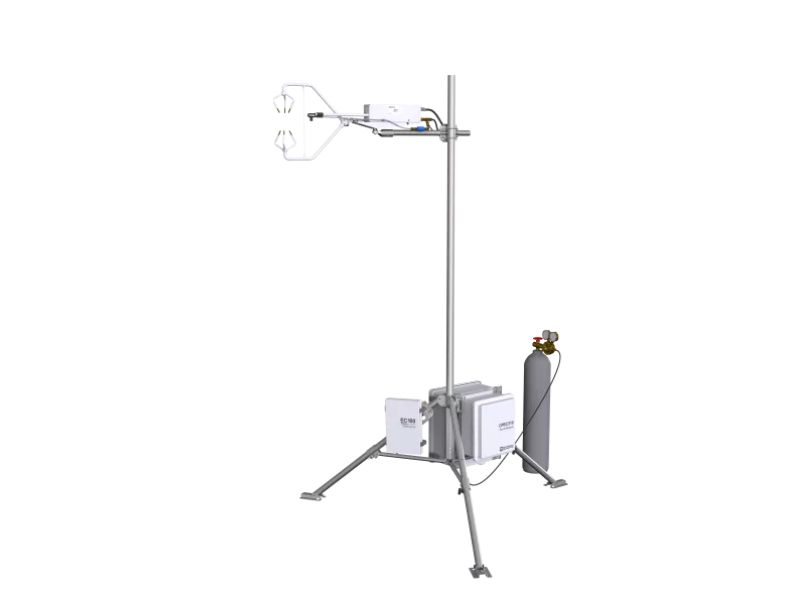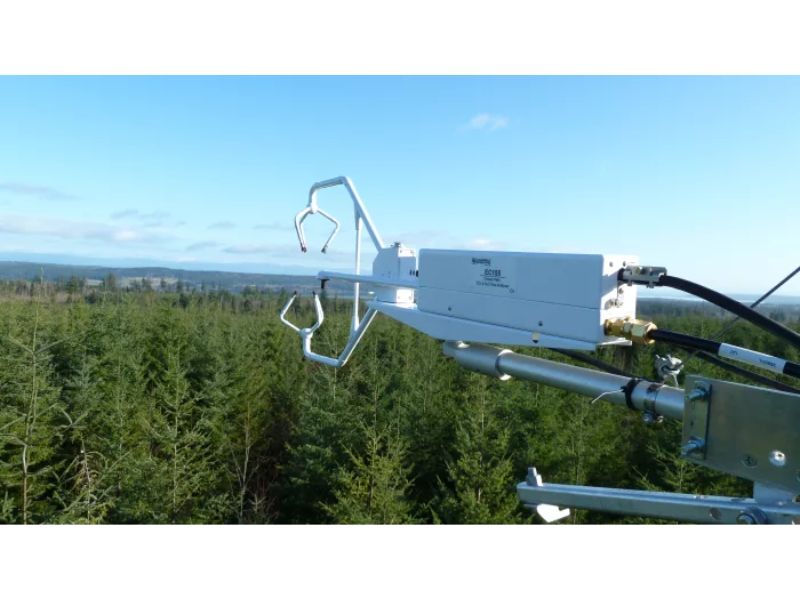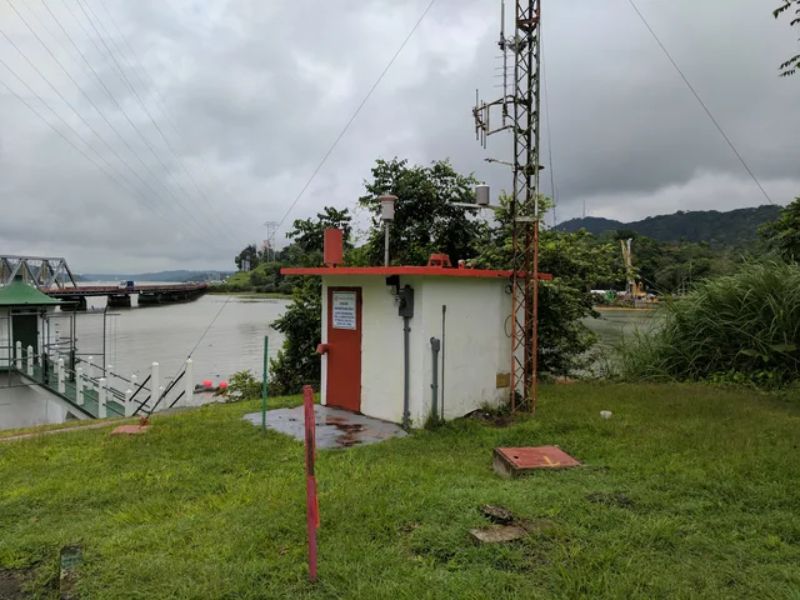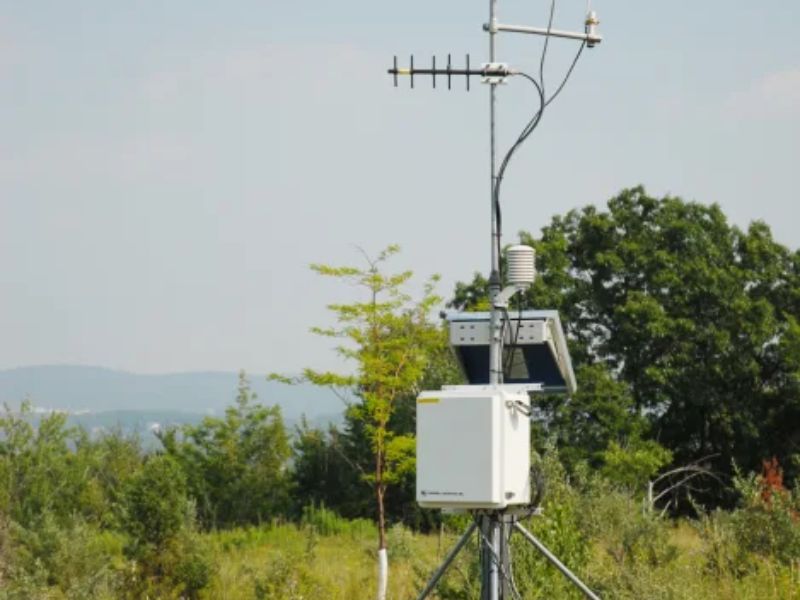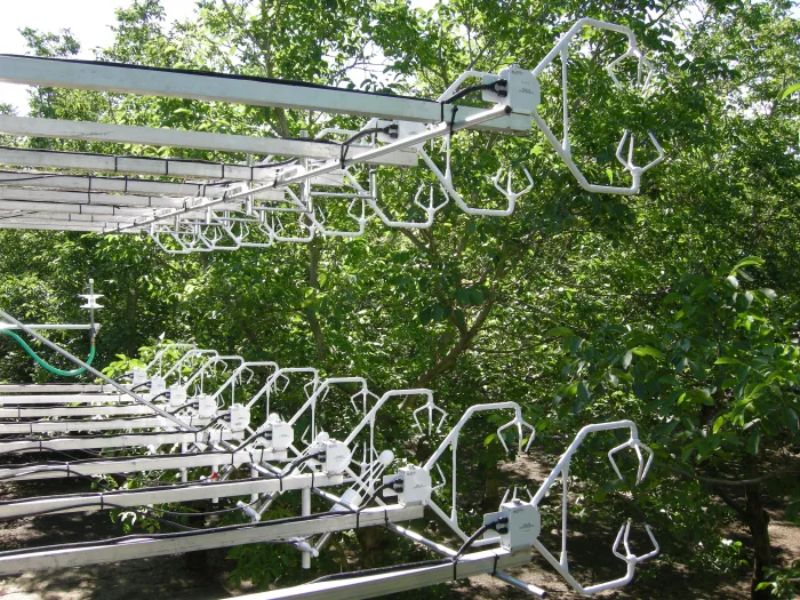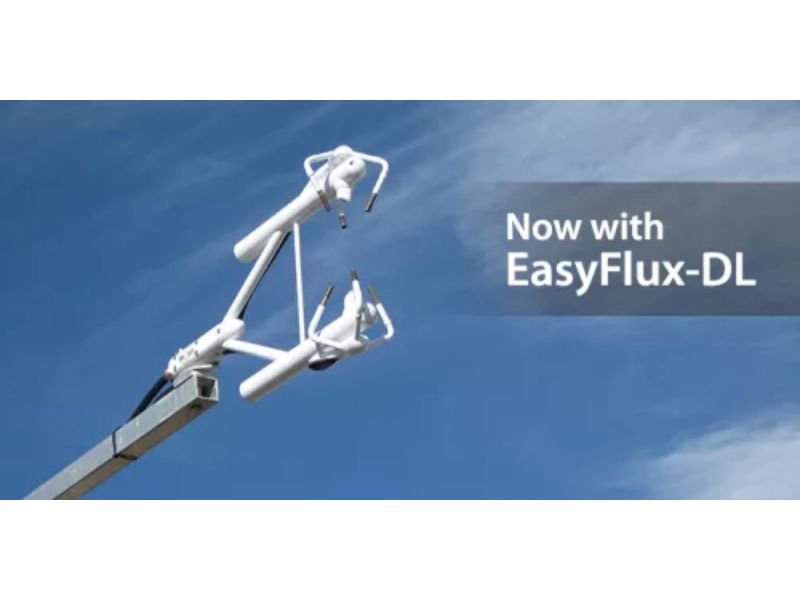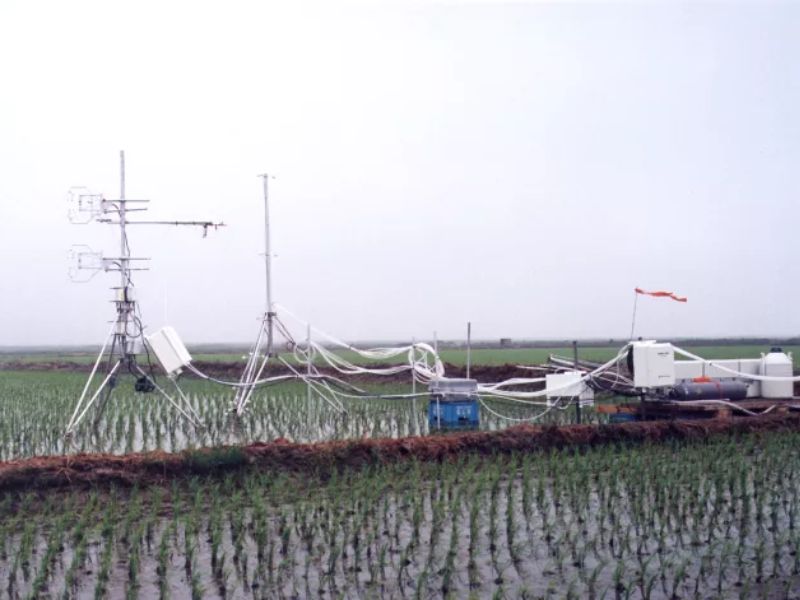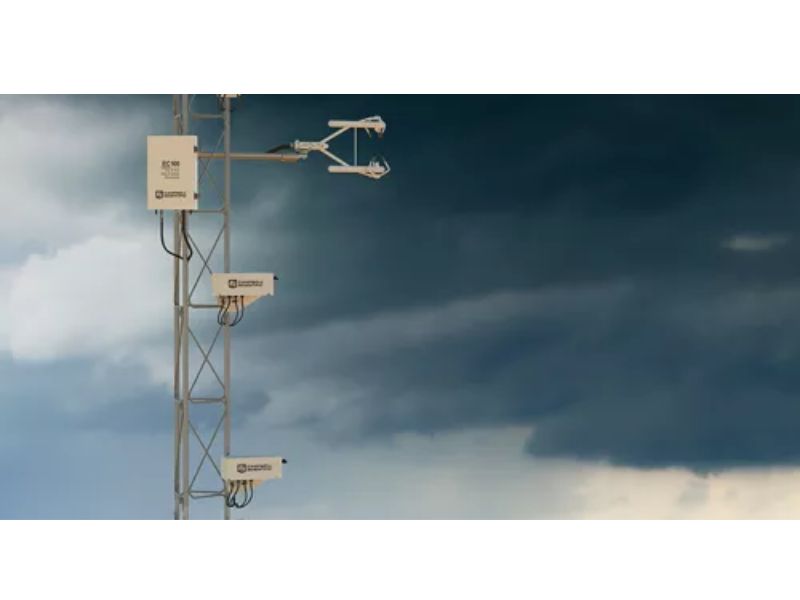Carbon flux systems are designed to measure CO2 and CH4 gas exchange between the biosphere and atmosphere. Campbell Scientific is the only company to manufacture both the gas analyzer and sonic anemometer needed for the eddy-covariance technique, helping to ensure the highest-quality data. Combined with the EasyFlux® series of programs and software, the system offers a complete solution with a simplified user experience.
Product
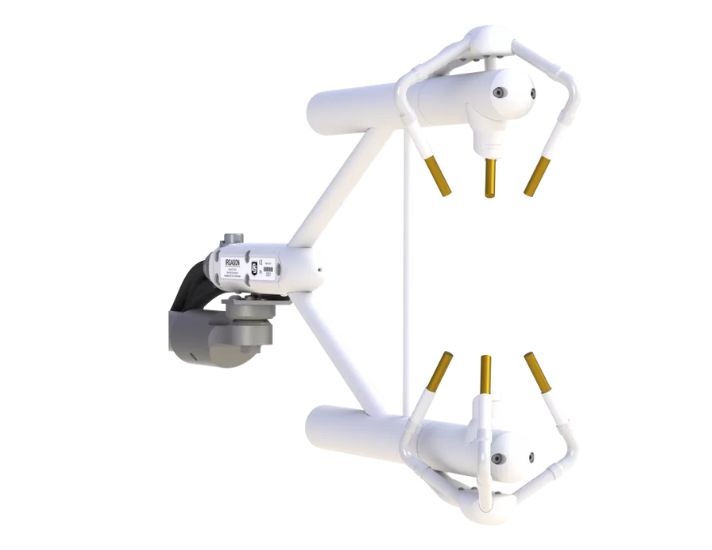
IRGASON – Integrated CO2 and H2O Open-Path Gas Analyzer and 3-D Sonic Anemometer
Campbell Scientific’s IRGASON® fully integrates the open-path analyzer and sonic anemometer. Designed specifically for eddy-covariance carbon and water flux measurements, the patented design is easier to install and use than separate sensors and provides increased measurement accuracy. The IRGASON simultaneously measures absolute carbon dioxide and water vapor, air temperature, barometric pressure, three-dimensional wind speed, and sonic air temperature. U.S. patent D680455

CPEC310 Expandable Closed-Path Eddy-Covariance System with EC155, Pump Module, and Automatic Zero and Span
The CPEC310 with EasyFlux® is a turn-key, closed-path eddy-covariance (EC) flux system for long-term monitoring of atmospheric-biosphere exchanges of carbon dioxide, water vapor, heat, and momentum. A complete system consists of a closed-path gas analyzer (EC155 closed-path gas analyzer), sonic anemometer (CSAT3A sonic anemometer), data logger (CR6 datalogger), sample pump, three-valve module that enables automatic zero and CO2 span measurements (manual H2O span), and accommodations for a CDM-A116 analog input expansion module allowing for additional sensors.
The gas analyzer’s patented vortex intake design (United States Patent No. 9,217,692) and small sample cell volume (5.9 mL) provide a much lower flow rate than other closed-path systems while maintaining excellent frequency response (4.3 Hz cutoff frequency). Additionally, this design makes the system virtually maintenance free while still maintaining an ideal frequency response compared to traditional inline filters. Lower flow allows the CPEC310 to have one of the lowest total system power requirements (12 W) of any closed-path eddy covariance system. Campbell Scientific manufactures all components of the CPEC310, including the data logger and EasyFlux® DL software for computing and correcting fluxes, which gives our system the most reliable functionality.

AP200 CO2/H2O Atmospheric Profile System
The AP200 is a complete, integrated CO2 and H2O atmospheric profile system. It measures carbon dioxide (CO2) and water vapor (H2O) concentration from up to eight intakes, which are normally spaced along the height of a tower to give a vertical profile. The AP200 is often used in conjunction with an eddy-covariance system to measure the storage term and provide you with a more complete measure of the surface gas exchange.
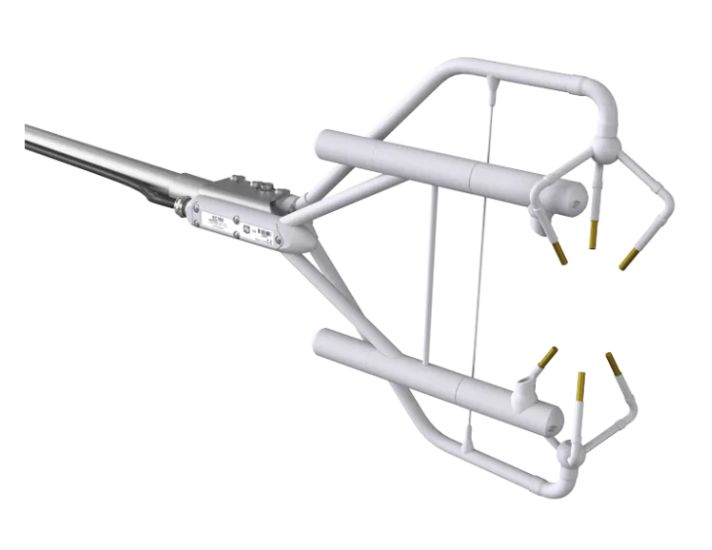
EC150 CO2/H2O Open-Path Gas Analyzer
Campbell Scientific’s EC150 is an open-path analyzer specifically designed for eddy-covariance carbon and water flux measurements. As a stand-alone analyzer, it simultaneously measures absolute carbon-dioxide and water-vapor densities, air temperature, and barometric pressure. With the optional CSAT3A sonic anemometer head, three-dimensional wind speed and sonic air temperature are measured.
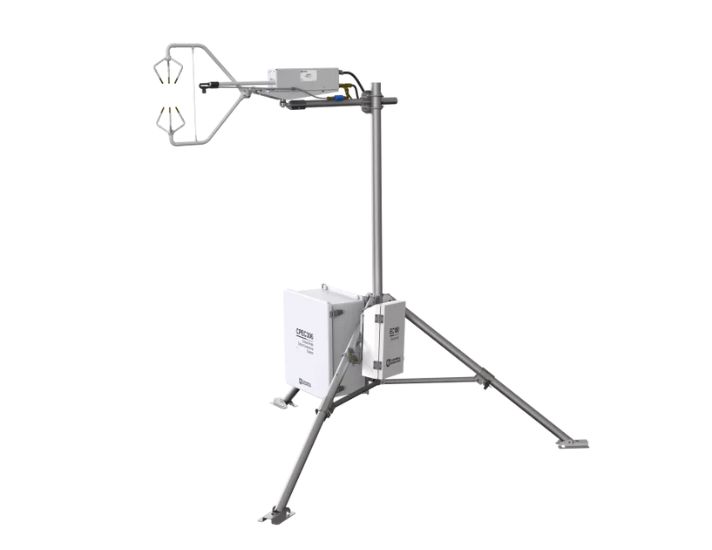
CPEC306 Expandable Closed-Path Eddy-Covariance System with EC155 and Pump Module
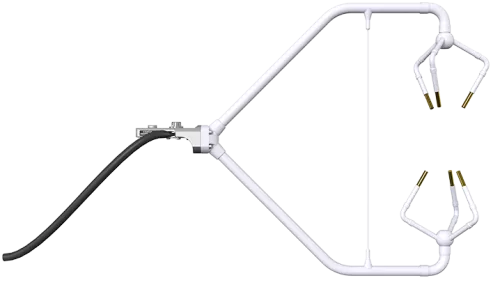
CSAT3A 3-D Sonic Anemometer
-
- Data logger’s SDM command
- EC100’s internal clock

EasyFlux WebS Software
Current Version: 2.01
EasyFlux® Web Self-Hosted is a web-based software tool for monitoring any Campbell Scientific data-logger-based system, including data loggers running EasyFlux® DL. EasyFlux® Web Self-Hosted is a user-installed version of EasyFlux® Web that allows users the ability to install on their own server and control updates of the software themselves. Monitoring a network of Campbell Scientific data-logger-based systems is made easy with real-time data monitoring, customizable alerts, and data download capabilities. EasyFlux® Web is compatible with all Campbell Scientific data-logger-based stations.
Updates in Version 2.01
The updated EasyFlux® Web 2.01 includes new benefits and features to enhance the user experience. EasyFlux® Web 2.01 now provides the ability to monitor live video cameras.
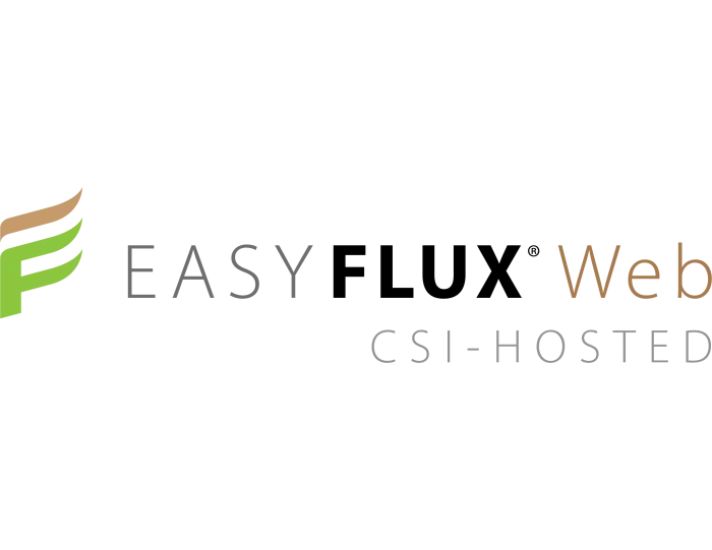
EasyFlux WebH Software
EasyFlux® Web CSI-Hosted is a web-based software tool for monitoring any Campbell Scientific data-logger-based system. EasyFlux Web CSI-Hosted is hosted on Campbell Scientific's own Microsoft Azure server, which allows for automatic updates and maintenance of the software. After users create an account, they are given their own IP address to allow them to easily connect to their data from an Internet-connected device. Monitoring a network of data loggers is made easy with real-time data monitoring, customizable alerts, and data download capabilities. EasyFlux Web is compatible with all Campbell Scientific data-logger-based systems, including flux, weather, and soil stations.
Updates in Version 2.01
The updated EasyFlux Web 2.01 includes new benefits and features to enhance the user experience. EasyFlux Web 2.01 now provides the ability to monitor live video cameras.

EasyFlux PC Eddy-Covariance Post-Processing PC Software
EasyFlux® PC is a free computer program that processes high frequency time series data, collected using a Campbell Scientific eddy-covariance flux system, into fluxes following community accepted practices. Fully corrected fluxes of CO2, latent heat (H2O), sensible heat, and momentum are available in generic, AmeriFlux, and GHG-Europe ASCII formats.

EasyFlux DL Eddy-Covariance Datalogger Program
EasyFlux® DL is a free CRBasic program that enables a data logger to report fully corrected fluxes of CO2, latent heat (H2O), sensible heat, and momentum from a Campbell Scientific open-path and closed-path eddy-covariance (EC) system. Final fluxes are processed from raw high frequency time series data by applying commonly used corrections found in scientific literature.
In the past, Campbell Scientific's data logger EC programs roughly estimated fluxes, and PC post-processing software was used to fully correct the flux measurements. Now with the EasyFlux® DL program, fully corrected fluxes are processed by the data logger and reported at the end of each EC averaging interval.
EasyFlux® DL has been tested at several stations in various environments, including irrigated alfalfa, grassland, maize, open water, forest, and desert. The results have shown good agreement with fluxes processed using traditional PC-based software applications.
Overview
What is a carbon flux system
A carbon flux system is an integrated system of components used to measure, record, and process the carbon dioxide (CO2) or methane (CH4) exchange between the biosphere and atmosphere in the surface layer of the atmosphere. These systems are used over different land types (such as forests, grasslands, crops, and shrubs) across the globe to provide information needed for management and research purposes. Carbon flux systems that offer a rugged design, low power requirement, low maintenance, and network monitoring software can operate remotely for long periods without the need for expensive site visits.
How does a carbon flux system work?
The carbon flux systems offered by Campbell Scientific measure the carbon exchange between the biosphere and atmosphere using the eddy-covariance technique. This technique relies on a high-resolution, fast-response 3-D sonic anemometer, as well as a fast-response gas analyzer, data logger, and flux processing program.
In some ecosystems, profile measurements of carbon dioxide, water vapor, and temperature are measured, and a carbon storage flux term is identified.
What are the different components of a carbon flux system?
A typical carbon flux system, using the eddy-covariance technique, comprises a variety of components, including the following:
-
- High-resolution, fast-response 3-D sonic anemometer
- Fast-response gas analyzer
- Storage flux system
- Data logger
- Flux processing program
- Surface energy balance sensors
- Ancillary biometeorology sensors
- Mounting structures
- Remote communications
3-D sonic anemometer
A 3-D sonic anemometer (such as Campbell Scientific’s CSAT3B, CSAT3A, or IRGASON®) measures three orthogonal wind components and the speed of sound by determining the time of flight of sound between three pairs of transducers. In a carbon flux system, the turbulent fluctuations of vertical wind measured by the 3-D sonic anemometer are used in conjunction with an infrared gas analyzer to estimate the magnitude and direction of CO2 exchange. This instrument must have adequate frequency response to capture small eddies in the atmosphere. All of Campbell Scientific’s sonic anemometers have adequate frequency response to be used in carbon flux systems.
Gas analyzer
A gas analyzer in a carbon flux system measures the scalar component of the flux. Campbell Scientific’s gas analyzers for measuring CO2 exchange (IRGASON®, EC150 and EC155) are non-dispersive mid-infrared (NDIR) absorption analyzers. A source of infrared radiation is passed along an optical path to a detector. Interference filters are used to filter light wavelengths that correspond to CO2 absorption and CO2 transmittance. Thus, the dual wavelength nature of the analyzers provides both a reference and sample reading without the need for a separate reference cell and detector.
Rather than using NDIR, a tunable diode laser is used (TDL) to measure CH4 exchange. Lasers used in Campbell Scientific’s TGA200A analyzer are interband cascade lasers (ICL) and can be chosen for target wavelengths between 3 to 6 µm. This mid-infrared range captures where many important trace gases have their peak absorption (CO2, N2O, and CH4).
Gas analyzers used for measuring carbon flux with the eddy-covariance method must be aerodynamic and sample fast enough to resolve small eddies.
-
- At Campbell Scientific, we have designed our open-path gas analyzers to be aerodynamic and minimize flow distortion compared to other designs that place a large bluff-bodied gas analyzer adjacent to the sampling volume of the sonic anemometer.
- The closed-path design also minimizes flow distortion by minimizing the size of the sample intake and inlet.
Gas analyzers must also be able to respond rapidly to small eddies in the atmosphere. The IRGASON®, EC150, EC155, and TGA200A all have adequate frequency response to be used in carbon flux systems.
Storage flux system
During periods of little to no turbulence, especially during the night, there can be a significant contribution of the flux that cannot be captured by the gas analyzer and sonic anemometer listed above. The lack of turbulence causes a gradient buildup of CO2 that is not transported by eddies into the sensing volume of the instruments. This gradient remains until the sun rises and turbulence is restored. The result of the above cycle results in apparent periods of little to no flux followed by a large contribution to the flux. With a profile system, such as Campbell Scientific’s AP200, a gradient of CO2 flux can be measured with a slower response gas analyzer, such as the LI-840A (LI-COR Biosciences, Lincoln NE) and several intakes. This gradient can then be integrated over time, with a storage flux term calculated and added to the daily flux total. The result is a more accurate CO2 flux and better estimation of net ecosystem exchange (NEE).
Data Logger
In almost all applications, Campbell Scientific carbon flux systems operate in conjunction with a data logger (that is, the CR3000, CR6, CR1000, or CR1000X).
- For the open-path carbon flux systems and closed-path CH4 flux system, the data logger is used to do the following:
- Store the raw data.
- Process the raw data and store fluxes.
- Allow for remote communications to the station.
- Provide diagnostic information about the system.
- For the closed-path CO2 flux systems, in addition to those functions listed above, the data logger also provides the control for the pump flow and valve switching (for zero/span calibration).
- For the storage flux system, the data logger provides all the same functions listed above for the open-path system and additionally controls the valve switching and timing for the profile gradient measurements.
Flux processing program
The data loggers used with Campbell Scientific carbon flux systems require a program for data storage and system operation. For the open- and closed-path carbon flux system, this program is provided as part of our EasyFlux® DL offering. EasyFlux® DL is a CRBasic program that enables the data logger to report fully corrected carbon fluxes processed from raw high frequency time series data by applying commonly used corrections found in scientific literature. Additionally, this program stores diagnostic and calibration information.
For the storage flux system, a program is provided that offers system control, diagnostic and calibration information storage, and profile site concentration averages that can be used to calculate a daily storage value.
Surface energy balance sensors
Carbon flux systems are often equipped with additional sensors to measure the surface energy balance. The surface energy balance consists of the net radiation (Rn), soil heat flux (G), latent heat flux (LE), and sensible heat flux (H). A CNR4-L, NR01-L, or NR-LITE2-L (from Campbell Scientific) is used to measure the net radiation. In a Campbell Scientific carbon flux system, HFP01-L or HFP01SC-L heat flux plates are used with CS616 or CS65(x) water content reflectometers and TCAV-L averaging thermocouples to calculate the ground heat flux. The gas analyzer and sonic anemometer provide carbon flux measurements for the latent and sensible heat flux. When an examination of the surface energy balance is performed, it checks for a conservation of energy and can provide estimates of flux reliability or bias in the measurements.
Biometeorology sensors
In conjunction with the surface energy balance sensors discussed in the previous section, additional biometeorology sensors are often used with the carbon flux system. In a Campbell Scientific carbon flux system, these include temperature and relative humidity probes (such as the HMP155A-L or EE181-L), rain gages (such as the TE525-L), and infrared leaf radiometers (such as the SI-111). Data from these sensors are important for gap filling carbon flux data and for understanding environmental conditions.
Mounting structures
Campbell Scientific offers tripods and towers for mounting carbon flux systems ranging in height from 2 to 9 m. These offerings include the CM106B, CM110, CM120, UT10, UT20, and UT30.
Remote communications
Cellular, radio, or satellite telemetry can be used for remote communications to carbon flux systems. This can allow for data monitoring as well as data transfer of fully processed fluxes. Moreover, with the addition of EasyFlux® Web, it is easier to monitor institution networks of remote carbon flux systems from anywhere in the world.

